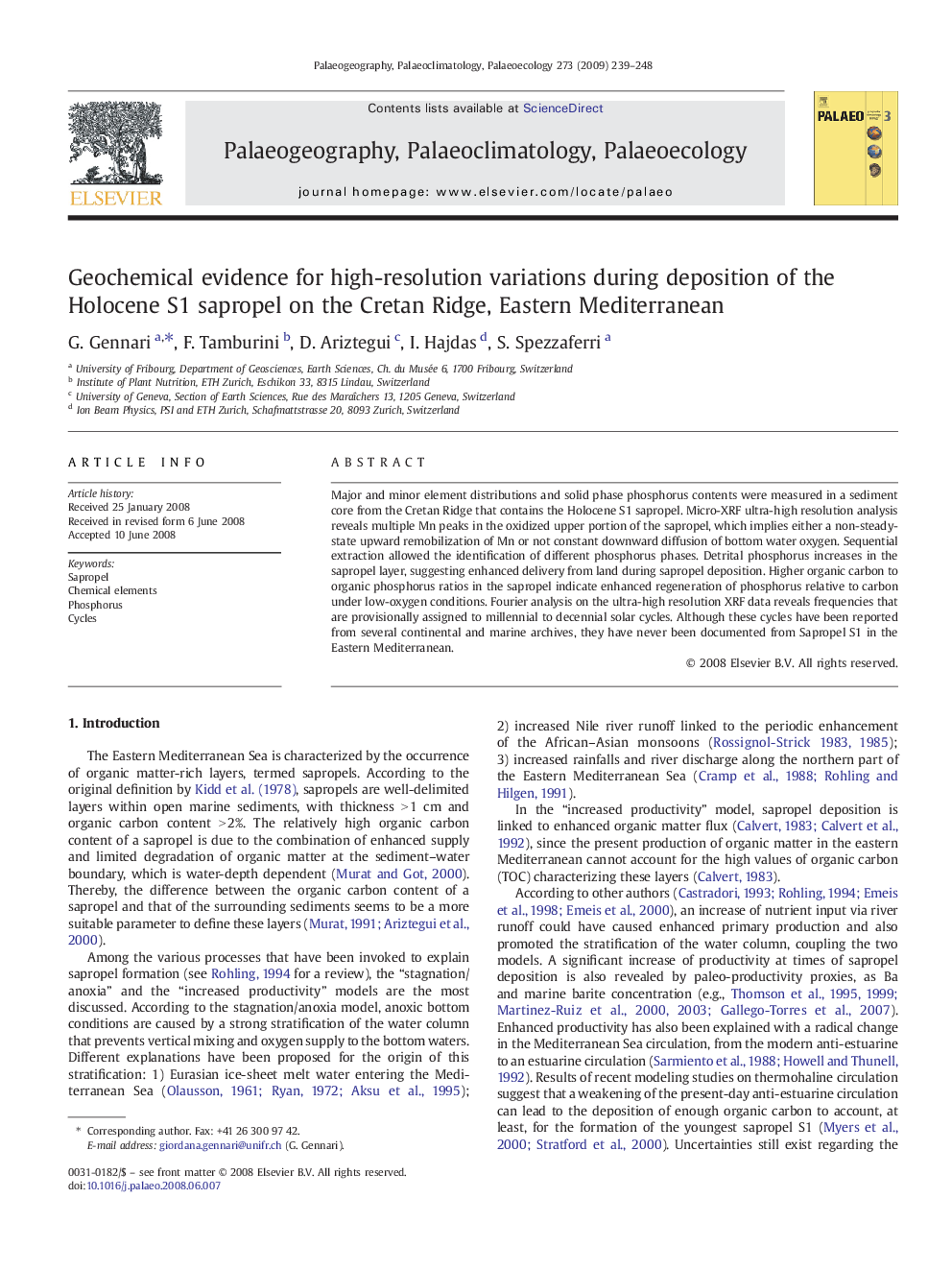| Article ID | Journal | Published Year | Pages | File Type |
|---|---|---|---|---|
| 4468192 | Palaeogeography, Palaeoclimatology, Palaeoecology | 2009 | 10 Pages |
Major and minor element distributions and solid phase phosphorus contents were measured in a sediment core from the Cretan Ridge that contains the Holocene S1 sapropel. Micro-XRF ultra-high resolution analysis reveals multiple Mn peaks in the oxidized upper portion of the sapropel, which implies either a non-steady-state upward remobilization of Mn or not constant downward diffusion of bottom water oxygen. Sequential extraction allowed the identification of different phosphorus phases. Detrital phosphorus increases in the sapropel layer, suggesting enhanced delivery from land during sapropel deposition. Higher organic carbon to organic phosphorus ratios in the sapropel indicate enhanced regeneration of phosphorus relative to carbon under low-oxygen conditions. Fourier analysis on the ultra-high resolution XRF data reveals frequencies that are provisionally assigned to millennial to decennial solar cycles. Although these cycles have been reported from several continental and marine archives, they have never been documented from Sapropel S1 in the Eastern Mediterranean.
